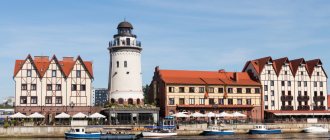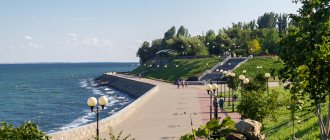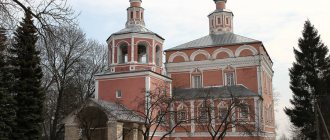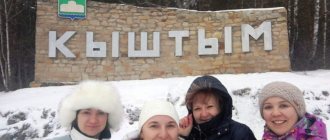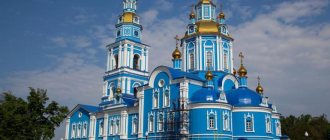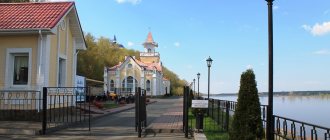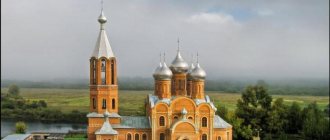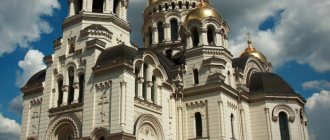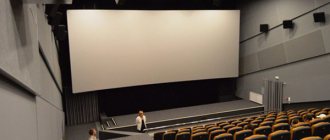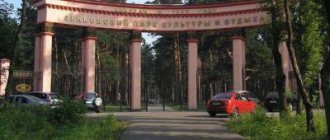Volokolamsk is a small city northwest of Moscow. Mentioned in the Laurentian Chronicle under the name Volok na Lama in 1135, it became an important point on the trade route from Novgorod to the lands of Moscow and Ryazan.
Being the most ancient city in the Moscow region, Volokolamsk often experienced a change of rulers: the Novgorod, Moscow, Vladimir, and Smolensk princes ruled it until the Lithuanian invasion, which, by the way, was successfully repelled by Volokolamsk.
Sadly, the city was also subject to destruction: in the 13th century it was captured by Khan Batu and Khan Duden; Volokolamsk suffered greatly during the Second World War, repelling the enemy’s attack on Moscow.
Today Volokolamsk is famous for its clean air, beautiful nature along the banks of the Gorodna River, a tributary of the Lama, and the ethno-festivals taking place there.
On the way to Volokolamsk from Moscow you will pass the Arkhangelskoye estate, the Vadim Zadorozhny Museum of Technology, the New Jerusalem Monastery and other interesting sights - look at them on the map of important places in the Moscow region.
Volokolamsk Kremlin
A grandiose architectural monument of past centuries is located on the territory of the Volokolamsk settlement, on an earthen rampart. This complex includes the Resurrection Cathedral, St. Nicholas Cathedral, the Bell Tower and the Stone Fence.
The Resurrection Cathedral was built around the end of the 15th century. A striking example of early medieval architecture adopted in Rus', this temple was built with four pillars and one dome. In 1930, the Bolshevik government closed the temple and began to fully function only in 1990.
St. Nicholas Cathedral was built around 1862, as a memory of the heroes who gave their lives on the battlefields during the Crimean War.
Its architecture is significantly different from the neighboring temple, which allows both temples to contrast favorably against each other, highlighting their best sides.
St. Nicholas Cathedral was built in pseudo-Russian style. This single-domed red brick cathedral with white decorative trim looks very impressive.
According to the design of N.P. Markov, a bell tower with five tiers was built in 1880. Currently, it attracts many tourists, not only for its beauty and power, but also for the opportunity to independently climb to the top and enjoy panoramic views of Volokolamsk.
The brick fence was erected almost simultaneously with the construction of the bell tower. The fence is very impressive; on it you can see such unique decorative elements as corner towers.
Previously, there were also gate towers, but after restoration in our time, only the corner ones have been preserved.
Location: Gorval street - 1.
Alley of Love
This miracle is located on one of the shores of School Lake. In 2009, a hand-forged Love Tree was erected on the alley. According to the newly introduced traditions, immediately after painting, the newlyweds hang locks with their names on it, and the keys from them are thrown away not just anywhere, but directly into School Lake.
This is a symbol not only of the strong family relationships of the young spouses, but also a testament to their strong mutual love and strong friendship. There are a large number of benches and gazebos, and there is even a special sports ground and stage. On weekends and holidays, all kinds of concerts are held on the Alley of Love.
Church of the Nativity of the Blessed Virgin Mary
This temple was founded in 1535 as the cathedral church of the Nativity of the Virgin Mary Monastery, which was later abolished.
Initially built in the Russian style, characteristic of the early Middle Ages, with a predominance of archaic and ponderous forms, the temple was repeatedly rebuilt and added to.
One of the oldest churches, located in the territories adjacent to Moscow, has four pillars, a hipped roof, two refectories, restored interior paintings, a three-tiered carved gilded iconostasis, and icons from the 19th century.
The temple has always played a significant role in the political, cultural and spiritual life of Volokolamsk and its inhabitants.
Location: Vozmishche street - 14.
Moscow Raceway
What Russian doesn't like driving fast? Remembering this rhetorical question from the work of Nikolai Vasilyevich Gogol, you can visit the sports and entertainment center in the village of Sheludkovo . Car and motorcycle races are regularly held here, as well as track days, when even a beginner can try his hand at the race track.
Photo: https://ru.wikipedia.org
Joseph-Volokolamsk Monastery
This monastery, founded in 1479 by St. Joseph, is located 16 kilometers from Volokolamsk.
Tradition says that the monks built the monastery on their own, taking clay from the nearby territory, which is why you can see three lakes nearby.
The guides will tell you that there was a search for an underground tunnel here, but to no avail, so there are still interesting discoveries to come here in the future. It is here that Malyuta Skuratov, an associate of Ivan the Terrible, is buried, but they can only say approximately the exact location of his burial.
The monastery became widely known in the 16th century, as many famous people of that era came here to pray.
In addition, in this monastery, which is not surprising, since monasteries in the Middle Ages were the main stronghold of literacy in Rus', there was a large and comprehensive library, ancient unique tomes.
During the years of Soviet power, the monastery ceased its functioning; an orphanage was located within its walls, but in our time it has been returned to the Russian Orthodox Church and is fully functioning.
Memorial to the Panfilov Heroes
On the site of the defense line, 28 Panfilov heroes in 1975 erected one of the most majestic monuments in the Moscow region. It is located in Dubosekovo near Volokolamsk and consists of six monumental ten-meter sculptures representing soldiers of six different nationalities from Panfilov’s division.
On the territory of the memorial complex there is an interactive bunker museum and an exhibition of military equipment.
Temple of the Apostles Peter and Paul
Built in 1694, it is the cathedral of the ancient Vlasievo Monastery. Its construction was carried out on the initiative of Archimandrite Joseph-Volotsky Monastery over the grave of Mother Joseph of Volotsky.
Unfortunately, the monastery itself has not survived to this day, as it was destroyed during the Time of Troubles. In 1877, in an entry from the choir books, it is indicated that the church had three altars: St. Apostles Peter and Paul, St. George, Alexy, man of God.
The temple was almost completely destroyed and looted in the 1930s, church utensils were stolen, the building itself and unique paintings were destroyed.
In 2008, the destroyed temple was officially transferred to the Russian Orthodox Church, restoration work is still underway, the main problem is the lack of funding.
Only one photographic image of the temple, taken in 1917, has survived; it shows the grandeur and beauty of the Peter and Paul Cathedral.
Location: Sovetskaya street - 28.
How to get there
Volokolamsk station (10, 50 Let Oktyabr street) is located in the southern part of the city, 7 km from the historical center.
Electric trains run here from Moscow (to Volokolamsk or Shakhovskaya station) from Rizhsky station (the journey takes 2.5 hours). Long-distance trains from Moscow to Velikie Luki or Riga also stop (the journey takes 2 hours). The bus station (Tsentralnaya St., 32) is located 2 km south of the center and 5 km north of the railway station (some buses also call at the railway station). From Moscow (from the Tushinskaya metro station) buses depart to Volokolamsk, Lotoshino, Markovo, Mikulino, Staritsa and Shakhovskaya.
By car from Moscow you need to travel along the Novo-Rizhskoe highway M9, 124 km.
A city bus runs from the train station to the city center.
Search for flights to Volokolamsk at minimal prices
Church of the Intercession of the Blessed Virgin Mary
The former cathedral church of the Varvara Monastery, originally it was wooden.
By decree of Peter I in 1695, a stone cathedral was built in its place. It became a full-fledged parish church after the monastery was closed in 1764.
The most famous shrines of the Intercession Church that were located in it are the early 16th century icons of the Great Martyr Barbara and the Dormition of the Blessed Virgin Mary. Now they are in the museum-reserve of Sergiev Posad.
It was this temple that remained the only one functioning during the years of Soviet power in the city of Volokolamsk.
Today, church parishioners have the opportunity to look at two especially revered icons in the church - “The Protection of the Mother of God” and “It Is Worthy.” The temple was built in the old Russian architectural style, with its laconicism and a minimum of decorative details.
Location: Dovatora street - 9.
Museum of German Anti-Fascists
According to historical data, in May 1942, camp No. 27 for prisoners of war was built in the city of Krasnogorsk. More than 50 thousand German prisoners of war passed through it. The status of this premises was quite high, to such an extent that its head was appointed by the People's Commissar of Internal Affairs himself. This camp existed until 1950.
In 1985, the leadership of the GDR proposed to create a Memorial Museum of German Anti-Fascists in its place, which was brought to life.
Location: street.
In the vicinity of the city of Dedovsk there are many more attractions, natural and historical monuments, beautiful architectural buildings and much more. It’s better to see everything with your own eyes once than to read about it thousands of times. And the presence of a large number of hostels and hotel complexes will give tourists the opportunity to comfortably stay in the city.
Volokolamsk Museum of Local Lore
In the building of St. Nicholas Cathedral, which is located on the territory of the Volokolamsk Kremlin, there is a wonderful museum. The museum exhibits will tell about the historical, archaeological and military past of the city.
The entire history of Volokolamsk is presented in a collection of unique specimens, from such as a mammoth rib, woolly rhinoceros bones, and traces of the presence of the Krivichi and Vyatichi in this territory before the Soviet period. In addition, in the museum you can see a model of the ancient settlement that preceded the city of Volokolamsk.
The museum occupies two floors; in addition to historical exhibits, among which there are ancient utensils and clothing of townspeople, you can see an art gallery.
Where to go with children in Shchelkovo
Shchelkovo will offer a wonderful cultural and educational program for the young traveler. There are several wonderful places in the town and its surroundings where children will have a lot of fun.
Cosmonaut Training Museum
Both the child and his parents should visit this amazing place. The collection of the museum, created at the Cosmonaut Training Center in the world-famous Star City, consists of rare exhibits and real relics. A separate exhibition hall is dedicated to the first earthling to be in low-Earth orbit. Personal belongings, archival and photographic documents telling about the life path of Yuri Gagarin are displayed here. Visitors will be able to see the simulators on which interstellar space researchers prepare for their missions, and listen to an interesting lecture on the history of space exploration. Museum guests are also invited to visit the Planetarium and Hydrological Laboratory.
Shchelkovsky Park of Culture and Leisure
The city park occupies an extensive recreation area stretching along the picturesque bank of the Klyazma River. Here you can have a wonderful time with the whole family. Teenagers enjoy riding bicycles, scooters, and rollerblades along the shady alleys. For children there is a special playground with trampolines, inflatable towns, and carousels. Experienced animators work with young visitors. Teenagers will certainly be interested in attractions of varying degrees of extremeness. Guests of the city are always welcome to visit the cafe, where delicious desserts are offered to those with a sweet tooth, big and small.
Museum of Military Uniforms
The fact that this wonderful museum is located on the territory of an active military unit is very symbolic
The quartermaster service has always been an important component of the Russian army. Not a single boy will refuse to view the unique exposition of the institution.
From the exhibits on display here, it is easy to trace in retrospect how military fashion has evolved - from the uniforms of Peter the Great's grenadiers to the equipment of modern special forces.
You can come to the colorful town on purpose or combine its visit with a tour to Moscow. There is certainly something to see here. The sights of Shchelkovo will not disappoint even the most experienced traveler.
Yaropoletsk People's Museum of Local Lore
Yaropolets, located in close proximity to Volokolamsk, is closely historically intertwined with it. In this village there is an interesting local history museum, which is a branch of the Volokolamsk Kremlin International Exhibition Complex.
Despite the fact that its exhibits are located in two halls located on the second floor, a visit to this museum can be of great benefit in enriching your horizons.
The exhibition is presented in 5 sections telling about: electrification of the region, the Decembrists, the Chernyshevs, the years of the Second World War, the Goncharov family, the regional state farm.
Exhibitions on the theme of the Goncharov family and the Chernyshev estate present real furniture that was used by these famous people. 3021 items in this museum .
Location: Dodogorskogo street - 4.
Village Yaropolets
Address: s. Yaropolets, from the Volokolamsk bus station it is reached by buses No. 28 and No. 39. Address of the Yaropolets Local History Museum: st. Dodogorskogo, 4 Telephone: 8 (49636) 6-31-56 (tour guide Antonina Pavlovna) Opening hours: 10.00 – 17.00, closed Monday and last Friday of the month.
There are two ancient noble estates located here. One of them successively belonged to the Doroshenko, Zagryazhsky and Goncharov families. The penultimate owner of the estate was N.I. Goncharova, mother-in-law of the great Pushkin.
The Chernyshev estate is “Russian Versailles”, its unofficial name is the most beautiful thing that remains of it. The once sophisticated architecture is now in ruins, the park is overgrown, the facades are gaping with holes in windows and main entrances.
Over the course of its thousand-year history, the royal personage Catherine II, the poet Pushkin, who sang anti-monarchist sentiments, and Vladimir Lenin, who overthrew monarchs, visited various estates and on various occasions over the course of its thousand-year history. The Yaropolets Local History Museum can tell you about the reasons and details of celebrity visits.
It will be interesting to see on your own:
- Pushkin's room at the Goncharov estate, where the poet stayed twice. Its interior was restored from photographs taken in 1937, when the original color scheme of the walls and fragments of ornamental painting were still in place.
- Kazan Church opposite the Chernyshev estate by architect Matvey Kazakov.
- Catherine's Church (at the consecration the Church of John the Baptist) with the Chess Gate. The chapels of the temple, completed at the beginning of the 19th century, are decorated with Tuscan porticoes in the classical style, which visually “raises” the massive Baroque church, and instead of the traditional church dome with an “onion”, the temple is crowned with a gilded ball with a cross.
- The tomb of the Ukrainian Hetman Doroshenko, who surrendered to Moscow, restored after destruction.
Ostashevo Museum of Local Lore
With the help of partisans and WWII veterans, a local history museum was founded in a 19th-century building. It is also a branch of the Volokolamsk Museum of History and Local Lore.
The architectural ensemble of the museum is a combination of several buildings: an estate, a horse yard, a tomb. All buildings are made in the pseudo-Gothic style; they accurately replicate the architectural designs of Western European cities of the late Middle Ages.
The museum displays many documents, photographs, the famous Ostashevskaya toy, and household items that can tell a lot about the past life of the village.
At the moment, here you can see the following exhibitions telling about: archeology, estate owners, the school of column leaders, the life and work of Grand Duke K.K. Romanov, the post-revolutionary period, the Second World War, and the partisan movement.
Location: Ostashevo village, microdistrict - 1.
House-Museum of A.P. Gaidar
At the end of the last century, the house-museum of the writer Gaidar was opened in the city. This historical monument contains his photographs, books, things and household items associated with his creative nature.
The museum exposition introduces tourists to his work, written in this city; there is a video screening of famous literary works, such as: “Chuk and Gek”, “The Tale of the Kibalchish Boy”, “Timur and His Team”, etc.
For children, events are offered related to the writer’s favorite childhood holidays, gatherings and trips to Gaidar’s country, and you can also celebrate the New Year there with Chuk and Gek.
The museum hosts various outdoor activities. Theater programs, games, songs and round dances.
Address: Gaidar street-17.
Volokolamsk People's Theater "On the Valu"
This theater was formed from a theater group in 1959, located in the regional House of Culture. It is a documented fact that at the opening of a new one, one of the few theaters in the Moscow region, according to tradition, People's Artist of the RSFSR Cecilia Mansurova cut the ribbon.
The cultural and creative heights of today's theater have been achieved thanks to the brilliant and incredibly talented people who stood at the origins of the theater, directors S. Uralsky, K. Polyakov, E. Kashkin, as well as actors of the Vakhtangov Theater.
The theater's repertoire program is based primarily on the classics of domestic and foreign literature.
The youth group “Debut” operates in the folk theater, which is an acting school. This cultural institution enjoys well-deserved recognition among residents of the city and its environs.
Location: Sovetskaya street - 2.
Souvenirs
Memorial to Volokolamsk residents who died during the Great Patriotic War
What to bring from a trip to the ancient city? In addition to refrigerator magnets with the coat of arms and albums with views of Volokolamsk, tourists willingly buy beautiful wooden dishes, clay mugs and sets of honey wax candles. Volokolamsk souvenir shops sell jam “At Pushkin’s Mother-in-Law”, figurines of the great Russian poet and figurines of Panfilov’s heroes.
Pilgrims bring blessed crosses, lace scarves, icons and church utensils from their trip.
Museum of Panfilov Heroes
In the Volokolamsk region there is a wonderful museum telling about the heroic feat of 28 Panfilov men who held the defense of the site and destroyed many enemy tanks, but died.
The location of the museum was not chosen by chance, because it was in these places that the battle took place. The museum was opened in 1967, in the village of Nelidovo.
The museum's exposition is a collection of exhibits telling about the heroes. Here you can see letters from the front, newspaper files, photographs, numismatics, and weapons from the Second World War.
Location: Nelidovo village, Krestyanskaya street - 18.
Volokolamsk Historical and Archaeological Museum
Address: st. Gorval, 1 Phone: 8 (49636) 23-35-2, 8 (49636) 2-33-52 Website: https://www.volok-museum.ru/ Opening hours: from 9.00-17.00, weekends: Monday, last Friday of every month. Cost: adult ticket - 100 rubles, children's and discounted tickets - 50 rubles.
The first exhibition of the museum tells about settlements in the region in the 4th millennium BC. An inspection makes it clear that the prerequisite for the emergence of this ancient city of the Moscow land was the advance of the Novgorod Slovenian, Vyatichi and Krivichi tribes here.
The excursion reveals in detail the role of the city's portage routes in the development of trade relations between the Moscow Principality and the Middle East, Western Europe, Byzantium and the Caucasus.
The central exhibitions of the museum tell about the ancient Russian principality, which existed until 1513, in their collections:
- Weaponry of the 12th – 16th centuries (for example, a princely ax with chasing and a four-leaf mark)
- Items of pagan cults: amulets, bear fang pendant, wind instruments
- Leather shoes of the 12th – 13th centuries: pistons, boots, shoes
- Hoard of silver coins, about 200 units, 16th century
Church of the Archangel Michael in Mikulino settlement
The five-domed cathedral was built in the Old Russian style typical of medieval Rus' in 1550. This church was built over the tomb of Prince S.I. Mikulinsky, who was the governor of Tsar Ivan the Terrible.
The cathedral was destroyed by the Poles during troubled times, and then was restored several times. In 1750 and 1887, the interior of the temple was painted.
Under the leadership of architecture professor N.V. Sultanov, restoration and major reconstruction were carried out: the wall in front of the temple and the altar was laid out, the southeastern drum was rebuilt, and the altar vault was corrected.
The temple was the center of spiritual life in this place, which itself is a cultural heritage site of federal significance. Unfortunately, it was closed in 1920. At the moment, after much significant work, the ancient church has been returned to the Russian Orthodox Church.
Location: Mikulino settlement.
City `s history
According to historians, the city appeared even earlier - in 1024, thanks to Prince Yaroslav the Wise. The ancient settlement was of strategic importance in trade between Novgorodians, Muscovites, Vladimir and Ryazan residents. Volokolamsk changed owners many times, managed to be an independent appanage principality and suffered greatly from the raids of the Tatar-Mongol troops. During the Time of Troubles, the city withstood a heavy siege by the Polish and Lithuanian prince Sigismund.
View of the Volokolamsk Kremlin
By the end of the 18th century, Volokolamsk had turned into a small provincial center. The first public school was opened there. In 1862, less than 2.5 thousand residents lived here, and there were only 220 houses. The situation did not change even in 1904, when the railway arrived here.
The city was occupied during the Great Patriotic War, and bloody battles took place in the surrounding area, which is why Volokolamsk has the status of “City of Military Glory.”
Nowadays, it is one of the settlements that are of great importance for the history and culture of the Moscow region.
Church of the Nativity of the Blessed Virgin Mary on Vozmishche
Monument "Explosion"
In honor of the feat of 11 sappers in the Second World War, a monument was erected at the 116th kilometer of the Volokolamsk highway, at the 116th kilometer.
Sculptor A. A. Veselovsky erected an architectural composition, which includes: a granite stand with engraved dates and memorial plaques, a sculptural image of the explosion that lifted the tank, due to which its right side buried itself in the ground, and the tracks came off on the left side of the tank .
Interestingly, for authenticity, the sculpture of the tank was made from a real enemy vehicle, recovered from the bottom of the swamp. In 2011, the monument was restored, as over the years of its existence it had become significantly dilapidated.
Location: Volokolamsk highway (114th km).
Pyramid of Hunger
Moving along the Novorizhskoye Highway, every tourist heading to Dedovsk can see an unusual structure - a pyramid. This structure is called the Pyramid of Hunger, and the famous architect Alexander Golod was involved in the development of its design back in Soviet times. The pyramid belongs to the energy type.
In Soviet times, about 20 similar pyramids were built throughout the country, which had different heights; the pyramid located near Dedovsk is 44 meters high. According to information received from the author, the pyramid is based on the golden ratio, so its sides have a ratio of 1:1.62.
The construction of the pyramid took place in 1999. The Pyramid of Hunger is located 11 kilometers from the center of Dedovsk.
Location: Chesnokovo village, Novorizhskoe highway, 38th km.
Estate of N. I. Goncharova
This estate in the village of Yaropolets, Volokolamsk region, is famous for the fact that the poet’s future mother-in-law was born here.
It was here that the future wife of A.S. Pushkin came for the summer, and later the famous couple visited this estate several times.
Before the revolution, the estate was owned by the Goncharovs; after the revolution, the estate was not nationalized, as it received the status of a cultural monument.
During the war and post-war years, the building was in great destruction due to the occupation by German troops and the actions of local residents, who dismantled part of the facade for building materials.
In 1969, after it became the Recreation House of the Moscow Aviation Institute, the estate was completely restored and put in order. Of particular interest is the Pushkin Room, where the historical interior of the 19th century is accurately recreated.
Sights of the city of Volokolamsk with photos and descriptions
Due to its geographical location, Volokolamsk often turned out to be the leading outpost of the capital’s defense in medieval wars and upheavals. This affected the small number of ancient architectural monuments that have survived to this day. But the unusually rich and heroic history of this city will undoubtedly be of interest to tourists.
Volokolamsk Kremlin
The main attraction of this city and its architectural dominant is the Volokolamsk Kremlin , located on the city rampart. It was built back in the 12th century to protect against nomads. At a later time, several unique temples were erected inside the fortress walls that have survived to this day:
- The Resurrection Cathedral is one of the most ancient churches in Moscow Russia, built back in the 15th century.
- St. Nicholas Cathedral , a temple in honor of the memory of soldiers who died in the battles of the Crimean War, was erected in the 19th century. Today the funds of the historical and architectural museum are located here.
These two temples and the adjacent five-tiered bell tower of the 18th century were planned to form a single complex inside the Volokolamsk Kremlin.
During archaeological excavations on the territory of the settlement, parts of the Kremlin’s defensive structures were discovered and are now available to tourists:
- palisade and earthwork from the early 12th century;
- earthen ditch of the southern part of the fortifications of the first half of the 14th century;
- fragments of stone pavement from the 16th century.
The Volokolamsk Kremlin is accessible to tourists from 9:00 to 17:00, every day except Monday. Be careful, the last Friday of the month is sanitary day.
Architecture
Volokolamsk is a city with a standard layout and development, first from imperial and then from Soviet times. But still, in its vicinity there are several unique architectural monuments:
- The Assumption Monastery is one of the best attractions in the Volokolamsk region. The first wooden church in the vicinity of the village of Teryaevo was erected by the Monk Joseph of Volotsky and Prince Boris in 1479 , and by 1486 a stone cathedral and bell tower were built. Today, the entire architectural composition of the Joseph-Volotsky Monastery, with its churches, walls and towers, is a unique example of Russian church architecture of the period of the 16th-17th centuries. During the struggle of the Soviet government with religion, many buildings were damaged, but since 1999 they have been actively restored.
- Vozmishchensky Church is one of the oldest religious monuments in the western part of the Moscow region. It was erected back in 1537 at the monastery. In all centuries, this church interrupted services only during the Great Patriotic War. Nowadays, the temple is operational, and here you can see unique paintings of the 16th century, which until recently were considered lost.
- The Chernyshev estate is a famous landmark in the village of Yaropolets. This place, which many call the “Russian Versailles”, unfortunately, is in a deteriorating state today, but will still delight tourists with its unique architecture.
- Tomb of Hetman P. Doroshenko in the village of Yaropolets. This mausoleum, erected at the beginning of the 19th century by the hetman’s great-great-grandson I. Goncharov, was destroyed in 1953, but later restored. Petro Doroshenko fought in alliance with the Tatars against Moscow, surrendered to Prince Romodanovsky and was pardoned. In 1685 he took possession of the village of Yaropolche, where he was buried.
Assumption Monastery
Chernyshev Estate
Other architectural landmarks:
- Kazan Church;
- Egor Kuzmichev's house;
- Sorrowful Temple;
- Pokrovskoe estate;
- Church of St. Nicholas the Wonderworker.
Monuments
First of all, the monuments of Volokolamsk, which since 2010 has held the title “City of Military Glory,” reflect the exploits of its defenders during the Great Patriotic War.
Did you know? The heroic defense of Volokolamsk in the fall-winter of 1941 is perfectly described in A. Beck’s story “Volokolamsk Highway”
.
- Memorial to 28 Panfilov heroes - this monument was erected on May 6, 1975 in the village of Dubosekovo, on the outskirts of which the legendary feat was accomplished. It depicts six guardsmen standing on the line of defense of Moscow, facing enemy tanks approaching from the west.
- The memorial to Volokolamsk residents who died on the fronts of the Second World War was opened in 1985 in the center of Volokolamsk on the territory of the former market. The memorial complex will be built from pedestals according to the number of war years, on which the names of the fallen heroes of the city and the eternal flame are carved.
- The bust of Panfilov is a monument to the major general, who, together with his division, heroically defended Volokolamsk. For skillful leadership, as well as personal courage, I.V. Panfilov was awarded the title of Hero of the Soviet Union posthumously.
Memorial to 28 Panfilov heroes
Other monuments:
- T-34 monument tank;
- 152 mm howitzer;
- memorial complex "Explosion";
- monument to internationalist soldiers.
Museums
In Volokolamsk and its surroundings, tourists interested in history will find several interesting museums with quite good collections.
- The Volokolamsk Kremlin museum complex is one of the main attractions of the city. Its exhibitions feature several unique architectural structures, as well as more than 25 thousand archaeological finds.
- The Museum of Panfilov Heroes was opened in 1968 in the village of Nelidovo. It presents portraits of heroes of the Soviet Union and participants in the Battle of Dubosekovo. In addition, the collection contains personal belongings of soldiers and officers, letters from the front and weapons.
- The local history museum in Ostashevo will tell tourists the history of this village and the entire region. There are several halls here that introduce visitors to peasant life in the 19th and early 20th centuries, a children's exhibition and an exhibition of weapons.
- The People's Museum of Local Lore of Yaropolets is a branch of the Volokolamsk Kremlin museum complex. His exhibitions feature more than 3,000 items of folk everyday life. Conventionally, the museum is divided into 5 exhibitions dedicated to the Goncharov family and A.S. Pushkin; Chernyshev estate; electrification of the parish; events of World War II; local state farm.
Museum complex "Volokolamsk Kremlin"
Museum of Local Lore
Did you know? The Yaropolets Local Lore Museum conducts excursions for tourists to local attractions.
